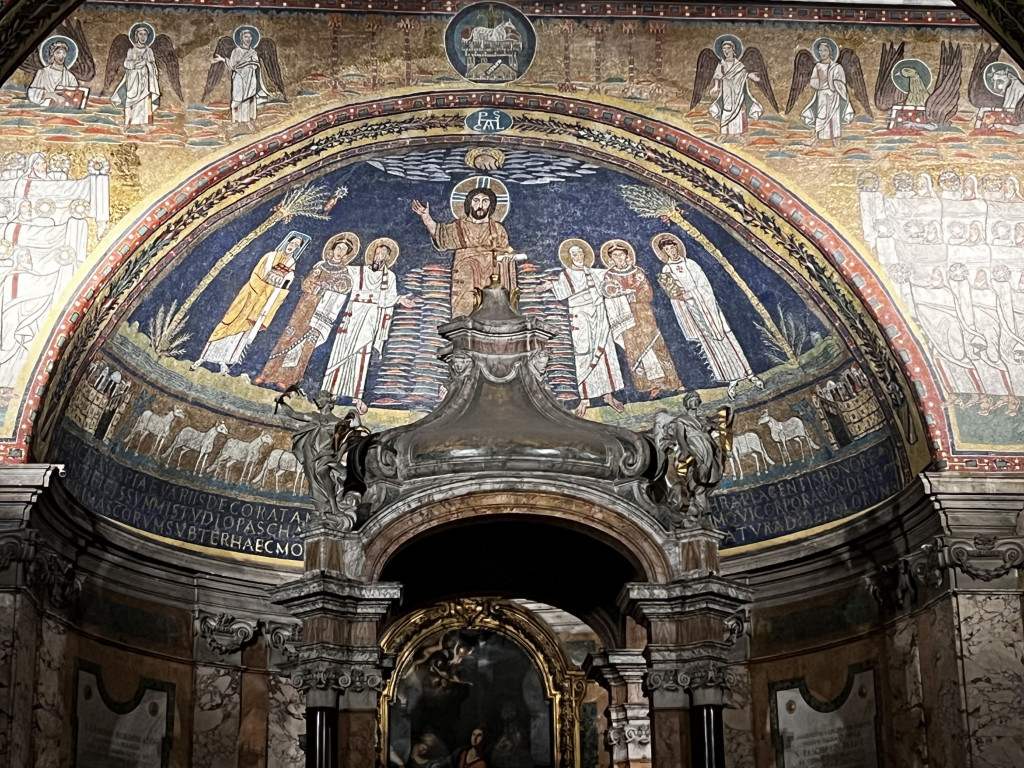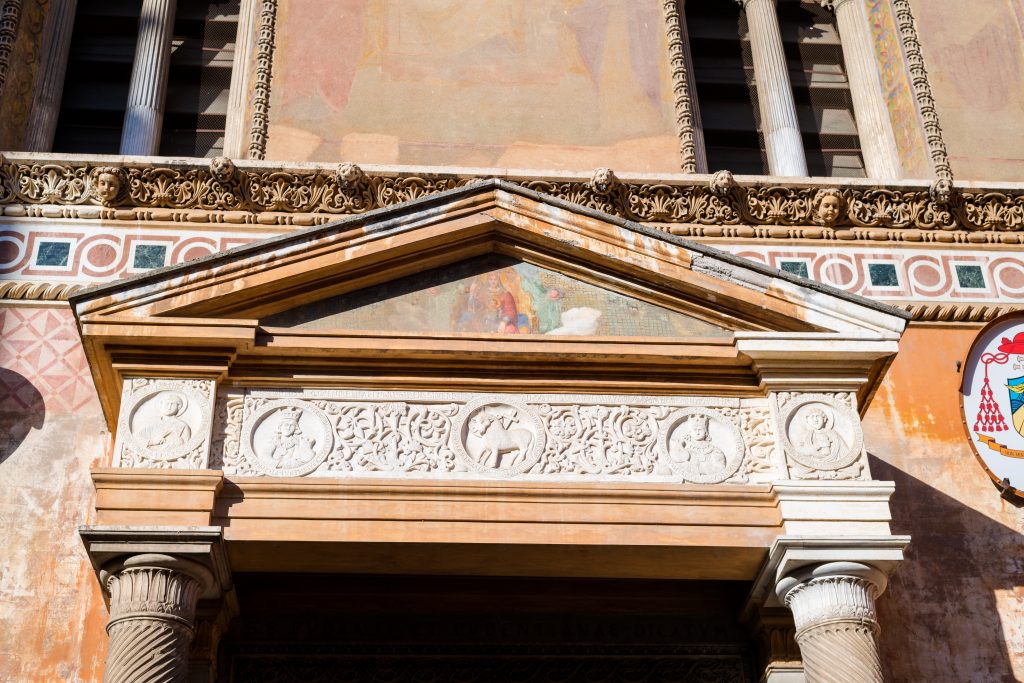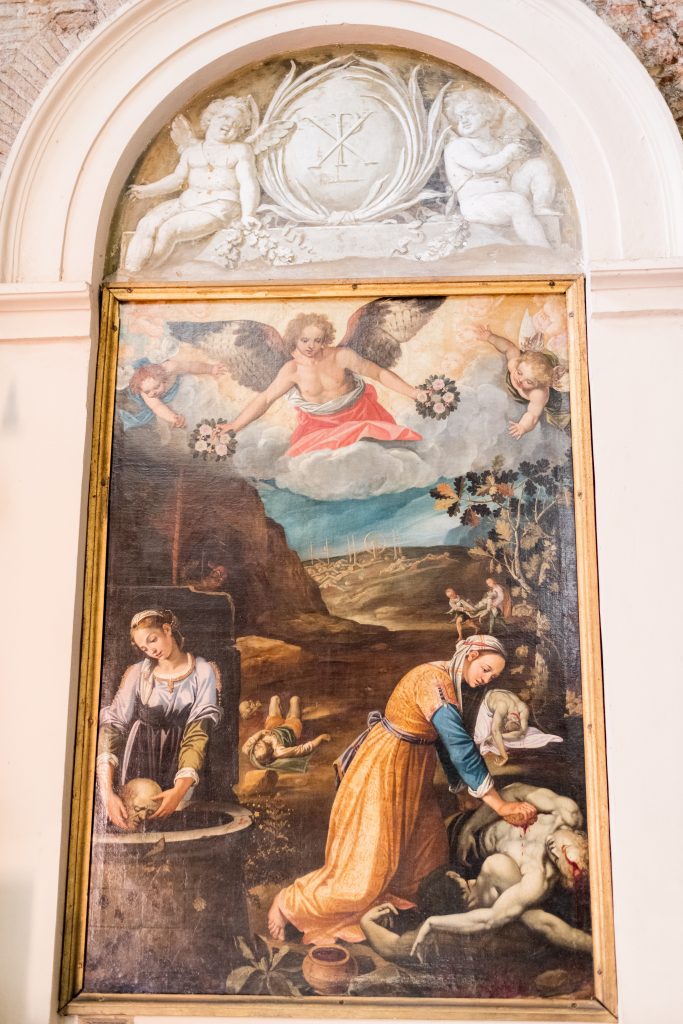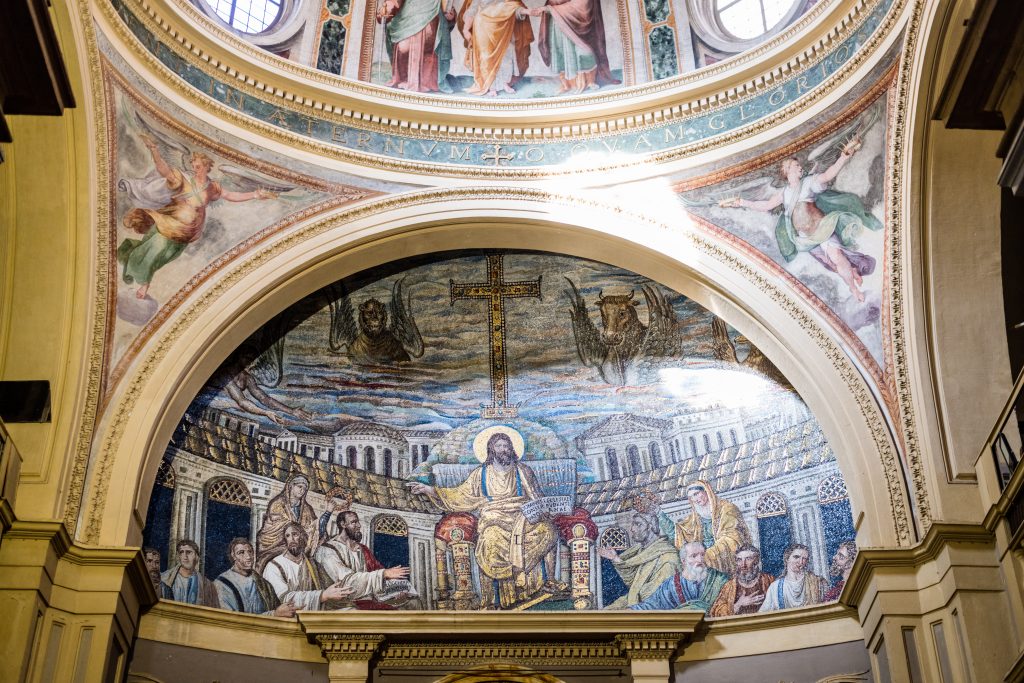Pudentiana & Praxedes
2nd Century
Biography – Pudentiana and her sister Praxedes were wealthy virgins, the daughters of a man named Pudens. Pudens raised his daughters in the Christian faith after their mother, Priscilla, died, but he too, died while the girls were in their teens. Pudens may be the same man mentioned in 2 Timothy 4:21, a disciple of Peter, but the unclear timing leads some to consider the girls’ father another man, perhaps a son or grandson of the original Pudens, by the same name, a senator who lived in the second century. Praxedes and Pudentiana inherited a large fortune that included property dotted with houses and baths. As the emperor Antoninus was persecuting Christians, the young women used their property to rescue and care for all they could manage, providing places to hide, to recover from wounds, and to be buried. They helped so many suffering believers that they are often depicted in art with sponges, the tool of their calling to mop up the blood of the martyrs.




Due to the persecution, believers had to worship in their own homes. The bishop of Rome, Pope Pius I (141–157) would say mass in the sisters’ house. The oratory in the house was called a title, and later became a titulus church, one of the oldest in the world. A baptismal font was installed in this church, where the sisters had ninety-eight of their household servants baptized
Pudentiana died first, possibly when she was sixteen, or after sixteen years of serving the Lord (records are unclear), leaving Praxedes bereft. Pudentiana was buried on the Via Salaria in the Priscilla Cemetery near their father. The Venerable Bede (700s) listed May 19 as her feast day and identified her as Praxedes’ older sister. The site on which the Basilica of Santa Pudentiana stands, part of the sisters’ inheritance, was given to Pope Pius I (bishop of Rome) around 145 and consecrated as a church in Pudentiana’s name. The remains of that original church lie in the basement of the current basilica, which was built in the fourth century. Pope Pius later dedicated yet another church a few streets away in the name of Praxedes. Two years after Pudentiana’s death, another outbreak of persecutions led to the executions of twenty-three Christians. Praxedes recovered their bodies and buried them in the cemetery of Priscilla, where her parents and sister were buried, in late May and succumbed to her own exhaustion and illness on July 21.
Resources:
- Dunbar, Agnes. A Dictionary of Saintly Women. Vol. 2. London: George Bell & Sons, 1905
- Lapidge, Michael. The Roman Martyrs: Introduction, Translations, and Commentary. Oxford: Oxford University Press, 2018.
